In this article we’ll tell you everything there is know about 20-30 mmHg compression socks and stockings… Why you should be using them to keep your legs in shape, and where you can buy the best designs!
What are 20-30 mmHg Compression Stockings?
Compressions socks and stockings come in many shapes, sizes, colours and most importantly: types of pressure. A different class is assigned to indicate the pressure each stocking puts on your legs and every class offers different benefits and support.
However, they all have one thing in common: they are meant for people who suffer from varicose veins or for people who want to prevent them!
So let’s take a closer look at the facts about these strange veins that nobody really asked for!
What are Varicose Veins?

Varicose veins are dilated, damaged veins.
There are two types of blood streams in our body: the first pumps oxygen-rich blood to the muscles and organs and the second one transports oxygen-poor blood to the heart.
Veins include valves inside the veins that open and close to keep blood flowing toward the heart. The valves ensure that blood can only flow in one direction, but as the valves get older, they become weaker.
Weakened or damaged valves or walls in the veins can cause blood to pool and even flow backwards. This is called reflux. When valves are no longer able close properly they can start to leak. The result is that the blood is not pushed up sufficiently and starts to trickle down where it increases blood pressure.
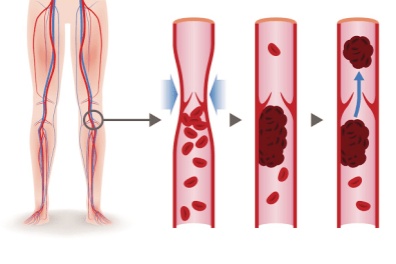
The veins may grow larger and become distorted, resulting in varicose veins that become visible on the surface of your skin.
Why Do Varicose Veins Occur in the Legs?

The blood flow in the legs always pumps up against gravity and the pressure from the rest of the body.
Varicose veins arise gradually and they come in many different shapes: thick winding cables and small skin varicose or spider veins that do not cause thickening, but are visible as red and / or blue discolouration on the skin.
My Grandma has Varicose Veins, Will I Get Them Too?
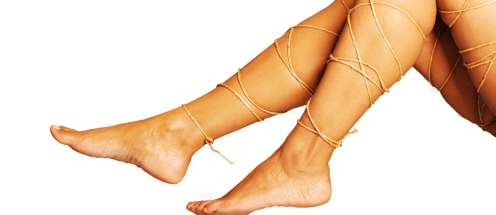
Heredity definitely plays a role in varicose veins.
Most people who suffer from mild or heavy varicose veins often have a family member that also suffers from it: almost 50% of varicose vein patients have a family history of varicose veins!
If both your parents have them, your chances to develop the disease are close to 90%!
What are Other Causes of Varicose Veins?
There are many factors to take into consideration when it comes to the chances of developing varicose veins.
Things, other than heredity, that increase your risks are:
- Age
- Frequent standing or sitting still
- Being overweight or obesity
- Pregnancy
- Oral contraceptives
- Disease or trauma
It is estimated that 50% of the US population over 50 years old has varicose veins, so you definitely have an increased risk if you are older. If you sit or stand for long periods of time or have an inactive lifestyle you also have an increased risk.
Women who are moderately overweight (BMI 25-29.9) have a 50% chance of developing varicose veins compared to women who are not overweight. Women with a BMI greater than 30 are three times as likely to develop varicose veins.
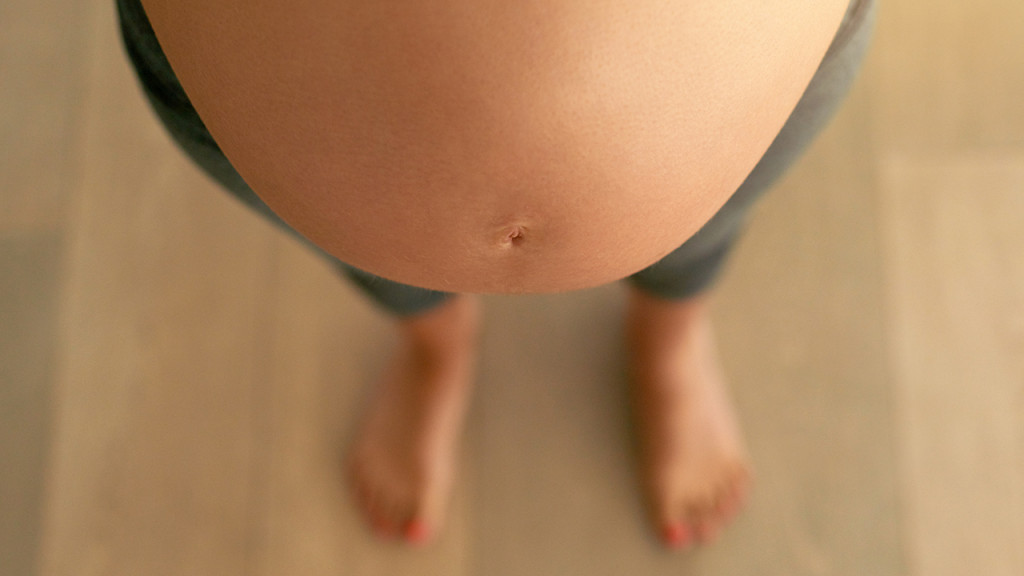
What Complaints are There?
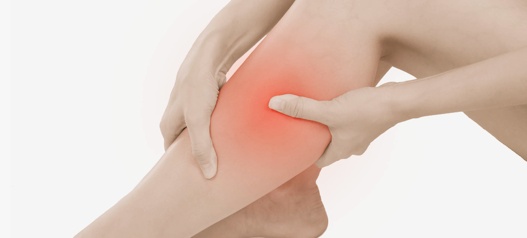
The most common complaint is heavy, tired legs. Some people suffer from restless or painful legs or cramps in the calves at night.
Thick ankles and eczema spots are also common and they can cause irritating itching. Elderly people sometimes develop wounds on the skin, because their veins have been affected for a long time by stowage, which is bad for the skin. Varicose veins do not always cause physical complaints, but most people are bothered by the aesthetic aspect.
Other signs and symptoms of varicose veins include bulging, bluish veins, swelling, aching pain, changes in skin color and in some cases varicose veins can limit your activities.
Is It True That Women Are More Likely to Get Them?
There is no reason to believe that women are more sensitive to varicose veins than men, with the exception that pregnancy does increase the risk. However, women are often more bothered by varicose veins when they are visible.
Which makes sense: when you wear a skirt or dress and your legs are visible, they can be very bothersome.
What Can I Do to Prevent Varicose Veins?
Unfortunately, complete prevention is not possible. If you have a talent for it, you will eventually get varicose veins. Some only get them during pregnancy or later in their lives and other people may get them at the age of twenty.
You can, however, delay the development of varicose veins (yay)!
Once you have varicose veins, you can counteract the complaints and prevent them from getting worse. The most common way to do this is by wearing compression stockings.

What Can Compression Stockings Do to Help?
Compression stockings give outside pressure to your veins and support your blood flow.
Gradual compression stockings put pressure on your legs like an outer bicycle tire does to the inner tube. Gradual compression means that the pressure down in the legs is highest just above the ankle. The higher up on the leg, the lower the pressure.
Gradual compression ensures better drainage of your blood and fluids and swelling in the legs and feet is actively prevented.
When you wear compression stockings, you will notice that your symptoms will decrease. Compression stockings provide comfortable support and they help prevent varicose veins from getting worse.
Should I Get Compression Socks or Stockings?
Which Compression Stockings Do I Need?
To determine which support stockings you need, we need to look at the pressure that a stocking puts on the legs.
This is specified as the compression value. The higher the compression rate, the more pressure is exerted by the stockings. This is measured in mmHg (millimeters of mercury).
There are many types of compression socks and stockings available without a prescription and they offer wide-ranging benefits. Before wearing a compression therapy of 20 mmHg (Firm Compression) and above, it is generally recommended to consult your health care provider to find out if graduated compression stockings are right for you.
If the answer is yes, they can tell you what pressure grade you should buy for maximum benefit and relief.

Runners wear support stockings and compression stockings to prevent heavy and tired legs and injuries or muscle aches. Pregnant women often wear therapeutic stockings or medical compression stockings to prevent tired legs, swollen legs or swollen feet.
But many people also want to wear compression stockings to prevent worsening of varicose veins. There are support stockings in different types of classes, sizes and designs. Which support stocking you need, therefore, varies per person. Below you will find a description of four different pressure classes of the compression stockings.
Class 1 (Low pressure, 15-20 mmHg) – Medium
Support stockings with a slight compression fall into the KKL1 or CCL1 class. These support stockings can increase your blood flow and offer a preventive solution against varicose veins. The pressure starts at the bottom of the heel and becomes lighter further up the leg.
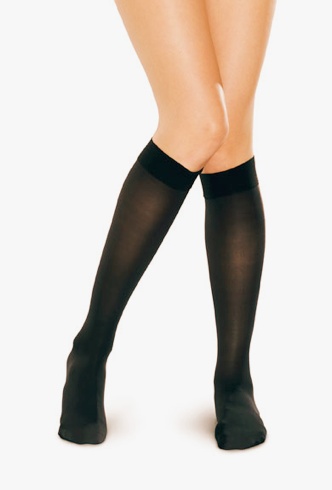
These compression stockings offer a slight pressure, they look like normal stockings and are very fashionable. They are best to be worn if you have the symptoms listed below:
- Sensation of tired and heavy legs
- Uncomplicated varicose veins without pronounced oedema
- Light form of varicose veins during pregnancy
- Slightly swollen legs, ankles and / or feet
They can help with:
- Helps prevent deep vein thrombosis (DVT), also known as economy class syndrome.
- Used in post-sclerotherapy treatment to help prevent the reappearance of varicose veins and spider veins.
- Ideal compression level used for those traveling long distances.
Class 2 (Average pressure, 20-30 mmHg) – Firm
Do you already have varicose veins and more serious complaints? You may need a support stocking in the KKL2 or CCL2 class.
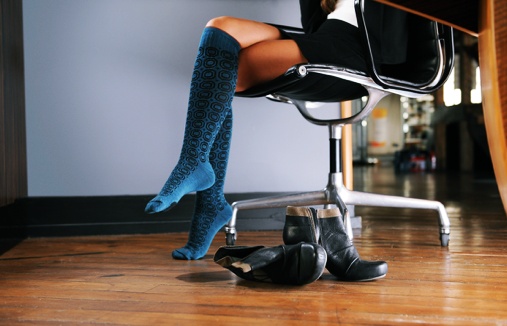
These type of compressions socks are only prescribed by medical professionals and it is not recommended to wear them unless your doctor has advised you to do so.
When you experience the following symptoms it is best to wear support stockings with class 2:
- Sensation of tired and heavy legs (for example after sitting, standing or walking for a day)
- More pronounced varicose veins and / or moderate oedema
- Varicose veins during pregnancy
- After sclerosis and vascular surgery for varicose veins
- Moderate to severe problems with blood circulation
- Swollen ankles and legs
- Moderate form of chronic venous insufficiency
This is how they can help you:
- Can relieve superficial thrombophlebitis.
- May stop orthostatic hypotension (that sudden fall in blood pressure when you stand up).
- Can help to prevent deep vein thrombosis (DVT).
Note: It’s recommended to contact a medical professional before you decide to wear compression socks with firm support/class 2. A doctor can tell you which type of compression is best for you specific problems.
Class 3 (High pressure, 30-40 mmHg) & Class 4 (Very high pressure, > 40 mmHg) – Extra Firm
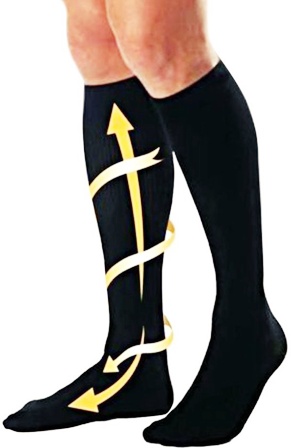
These type of compressions socks are only prescribed by medical professionals and it is not recommended to wear them unless your doctor has advised you to do so.
If you suffer from below symptoms, a support stocking with class 3 or 4 may be recommended:
- Severe varicose veins and / or severe oedema
- Protect against deep vein thrombosis (DVT)
- Insufficiency (weakness) of the valves in the deep veins
- After healing serious wounds (open leg)
- 40-50 mmHg gradient compression stockings are generally indicated for more serious venous diseases such as acute leg and ankle swelling, varicose veins, chronic vein insufficiency and deep vein thrombosis.
This is what they can do for you:
- Help prevent and relieve severe varicose veins.
- Used in the treatment of severe edema and lymphedema.
- Used in post-surgical and post-sclerotherapy treatment to help prevent the reappearance of varicose and spider veins.
- Help reduce symptoms of Orthostatic Hypotension and Postural Hypotension
- For the management of Venous Ulcers and manifestations of Post-Thrombotic Syndrome (PTS).
- Prevents deep vein thrombosis (DVT), also known as economy class syndrome.
- Help your healing process by taking over the task of dressing and stimulating blood circulation.
If you have an open leg wound or other urgent medical indication it is often recommended to wear extra strong support stockings, but not before you have spoken to a medical professional!
All stockings ensure that blood circulation is stimulated and wearing compression stockings over a longer period of time can reduce symptoms such as varicose veins or swollen feet and ankles. In general, wearing class 2 support stockings is best for varicose veins.
Popular Articles on ComproGear
Rose Toy Adult Rose Toy Reviews
Compression Socks for Gout Best Gout Socks Review
Always Wear the Right Size Compression Stockings!
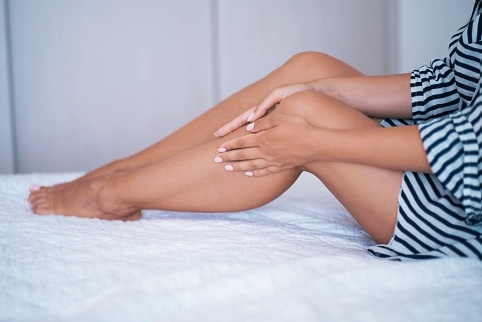
When using compression stockings, you should pay close attention to the degree of compression (heavy or light), and you should also make sure to wear support stockings in the correct size. You can determine which size you need by checking your shoe size and calf circumference in the size guide of the item you want to purchase.
When shopping for compression socks or stockings, it is best to measure earlier in the day before any swelling can build in the legs. Measurements taken later in the day, after swelling occurs, may cause you to choose a size that is too large and this can greatly reduce the effectiveness of the stockings.
Compression stockings should be put on in the morning when waking up, which is typically before any significant swelling can occur. They should then be removed at night. Throughout the day the compression prevents blood from pooling in leg veins, which in turn helps your overall circulation and lessens or eliminates any leg swelling you may normally have.
Related Articles:
Super Plus Size Compression Stockings and Bariatric Compression Socks
Plus Size Compression Socks in 2XL, 3XL, 4XL, 5XL, and 6XL
Where Can I Buy Compression Stockings?
So you decided that you need some help and you want to know where to get 20-30 mmHg compression stockings? Great!
You are very lucky to live in a different time than your parents or grandparents; remember the skin tone stockings your granny wore? Ughh…
Nowadays you can choose from a huge range of beautiful and fashionable compression stockings that will always compliment your outfit. Nobody needs to know you are wearing compression socks with the colours and designs that are available.
Check out the wide range of 20-30 mmHg knee-high compression stockings and order them today!
This page last updated November 2, 2022
